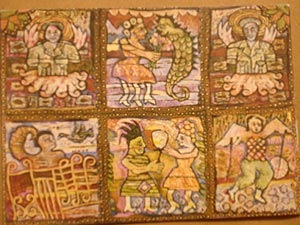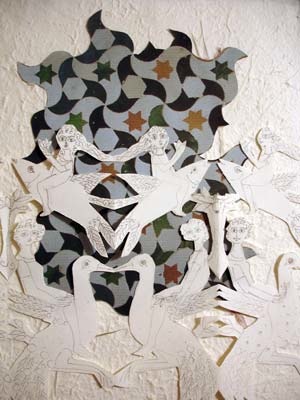CONTEMPORARY COPTIC ART
Coptic Art acquires its characteristics from the Ancient Egyptian Art mixed with the new Christian beliefs in Egypt.The Art came in different forms relating to the religious architecture and the daily life. Some historians classify Coptic Art as Folk Art. The wood work, arabesque, pottery and textile were the main arts continued until today.

Art groups began to appear to lead a new movement. The Egyptologist Dr. Sami Gabra, Habib Gorgui, Ragheb Ayyad, Ramsis Wisa Wasef were the pioneers of creating the contemporary concepts of Modern Coptic Art. Gorgui established the first school of spontaneous artists to prove the continuity of the heritage. In the meantime Wasef, and his wife Sophie Habib Gorgui, started a new school at Harraneya village in Giza creating one of the most successful art schools in the last century in Egypt.
Izaac Fanous established a traditional religious school of art to serve the Church working with mosaic, icons and frescoes at the Coptic Institute in Cairo. Some modifications happened in the approach by individual artists such as Bodur Latif and her husband who added a decorative style to enrich their icons.
The schools of art in Egypt played an important role in preparing generations of Coptic artists with their own artistic style as Kokab El Assal, Shafik Rizk, Mansour Farag, Georges El Bahguri, Eshak Azmi. Azmi eventually established an Art Center in Alexandria.
New contemporary artists participated in creating a new image for contemporary Coptic art through understanding the combination between tradition and contemporary art. To name a few, Mahfuz Salib, Gamal Lamie, George Fikri, Maha George and Evelyne Ashamallah.
Dr. Gamal Lamie
Professor for Visual Art at the American University, Cairo

Maha George

Gamal Lamie
Photo courtesy of Dr. Gamal Lamie